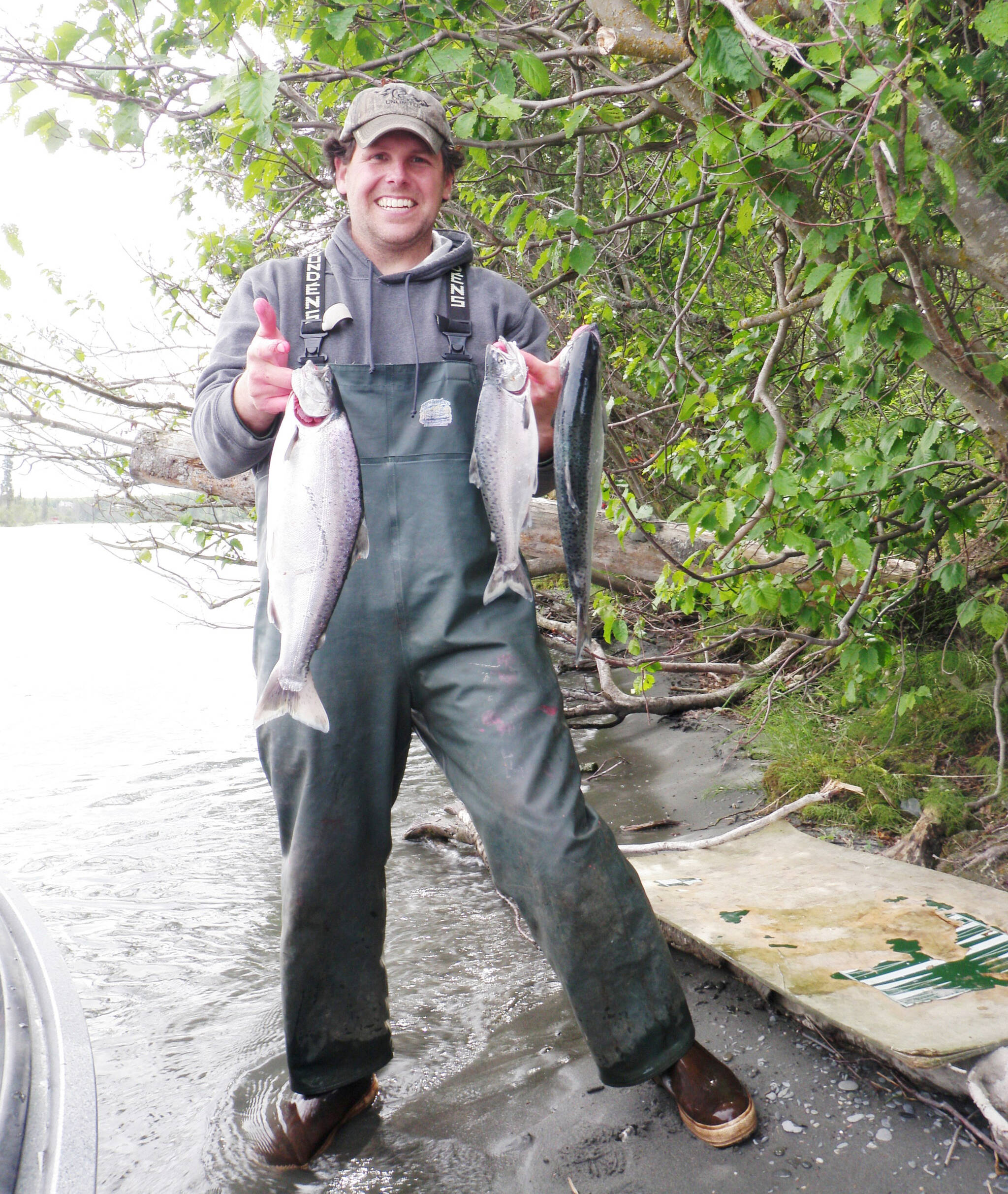Over the years, fishing for king salmon has provided many anglers with great memories and stories to tell their friends and family. Oftentimes these stories are accompanied with photos of the days when they were able to catch and keep a literal boatload of large king salmon. Very seldom did you see pictures of small king salmon or big kings to be released, especially kings taken from the Kenai River.
But new stories of large kings are becoming endangered.
Could consistent harvests of the largest king salmon be affecting their size composition in the Kenai River? The simple answer is yes.
Size-selective harvesting of plants and animals, including big fish, has been shown to change the size distribution and demographics of many species. There is little reason to believe that Kenai River kings are an exception.
Think of selection as pressure on individuals within a population, resulting in certain characteristics or traits becoming common or rare. In the presence of selection, plants and animals can either adapt to the pressure, move or risk the possibility of extinction.
“Natural selection” is manifested through nonhuman pressures (like female birds selecting for male birds with fancy tail feathers). Human-induced selection is generally referred to as “artificial selection” and is most commonly known as selective breeding. This is how most dog breeds became what they are today — continued selection for specific traits yields Fido or, better yet, a Chihuahua or a Great Dane.
Although artificial selection is generally associated with intentional outcomes, we frequently unintentionally select against desirable traits. An example is fisheries that harvest the largest and indirectly the oldest individuals from the population.
Consider Kenai kings. In this example, the DNA of harvested individuals is not passed on to future generations, leading to potential selection against larger and older fish.
Not only would we be selecting against larger and older fish, but we would also be indirectly selecting for smaller ones. Over time, possibly in just a few generations, the effects of this selection can manifest itself as smaller and younger spawners.
Furthermore, large reductions in the average size and age of fish populations are thought to be a principal contributor to lowered productivity since big fish tend to be big females.
Having small and big fish, young and old adults, and fish that return to spawn for several months versus weeks helps maintain genetic diversity. Genetic diversity in a population is nature’s way of protecting that population as a whole from environmental fluctuations and stressors.
A great way to think about diversity is the old saying, “Don’t put all your eggs in one basket.” If something were to happen to your basket of eggs, there wouldn’t be any more eggs. The parallel is true for fish populations, which is one reason why we observe multiple age classes and spawning groups in nearly all our salmon species.
Kenai River king salmon developed resilience to environmental change over thousands of years. They historically exhibited this genetic diversity by returning to spawn over a four-month time period ranging in ages from 3 to 7 years and sizes from 13 to 50-plus inches. Genetic diversity also presents itself in Kenai River king salmon through the use of multiple spawning areas within the watershed.
Nevertheless, we are observing signs of change in the spatial distribution of spawning fish, reductions in size and age-at-maturation, and sex ratios that are heavily skewed toward males. Recent observations indicate the oldest 7-year-old fish are virtually absent, and 6-year-old fish, which once were the bread and butter of the Kenai River, are becoming few in number.
Artificial selection (through human actions like harvest choices) and natural selection are likely playing important roles in our current observations but are also probably affecting the population at different rates. Natural selection usually works at a much slower rate than human-induced selection.
Human-induced changes often present more drastic changes over shorter time periods in which species often do not have the ability to adapt. Nonetheless, fish populations affected by human-induced changes can become less predictable until a new balance is developed.
In general, if genetic diversity is reduced, fish populations are thought to be at greater risk. They have less genetic flexibility or the potential to adapt to changing conditions. This could equate to less resilience to catastrophic events, lower productivity and delayed recovery from collapse or severe population alterations.
Fewer age classes, smaller sizes of fish at maturity or even shifts in run timing can be early indicators of decreased genetic diversity, regardless of which selection factors are in play. Depending on when you started fishing kings on the Kenai River, the population you observe today may not represent what you once remembered.
So next time you catch one, remember we all can play a role in conserving desired traits by catching and releasing a fish properly by keeping the fish wet and not bringing it out of the water.
Ken Gates is a U.S. Fish and Wildlife Service fishery biologist at the Kenai Fish and Wildlife Conservation Office in Soldotna. Check us out at http://alaska.fws.gov/fisheries/fieldoffice/kenai/index.htm for the latest reports.


